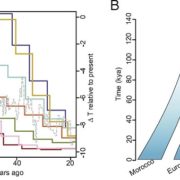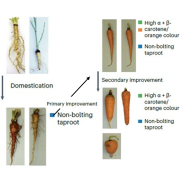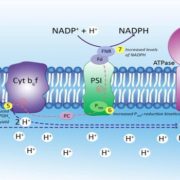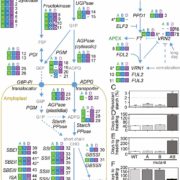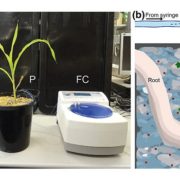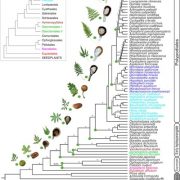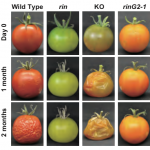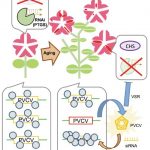An ancestral signalling pathway is conserved in intracellular symbioses-forming plant lineages ($) (Nature Plants)
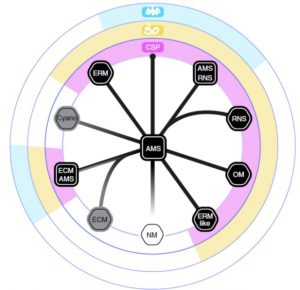 It’s widely thought that plants acquired the ability to live on land thanks to a little help from their friends, specifically arbuscular mycorrhizal fungi. Even now, most land plants form mutually beneficial associations with fungi or bacteria, and these often involve the plant cells acting as hosts for their intracellular symbionts. Some plants however have lost this ability, in what is termed mutualism abandonment. Radhakrishnan et al. examined more than 270 transcriptomes and 100 genomes spanning the plant kingdom to evaluate the presence of a core set of genes previously identified as required for arbuscular mycorrhizal symbiosis. Three of these are present in all plants that form intracellular symbioses, including those with a distinct origin such as ericoid myorrhizae, indicating “conservation in their evolution across 450 million years of plant diversification.” However, in species that have lost the ability to form intracellular symbioses, such as ectomycorrhizal plants in which the symbiotic fungus doesn’t enter the plant cells, these conserved core genes have been lost, indicating the involvement of a distinct molecular machinery. (Summary by Mary Williams) Nature Plants 10.1038/s41477-020-0613-7
It’s widely thought that plants acquired the ability to live on land thanks to a little help from their friends, specifically arbuscular mycorrhizal fungi. Even now, most land plants form mutually beneficial associations with fungi or bacteria, and these often involve the plant cells acting as hosts for their intracellular symbionts. Some plants however have lost this ability, in what is termed mutualism abandonment. Radhakrishnan et al. examined more than 270 transcriptomes and 100 genomes spanning the plant kingdom to evaluate the presence of a core set of genes previously identified as required for arbuscular mycorrhizal symbiosis. Three of these are present in all plants that form intracellular symbioses, including those with a distinct origin such as ericoid myorrhizae, indicating “conservation in their evolution across 450 million years of plant diversification.” However, in species that have lost the ability to form intracellular symbioses, such as ectomycorrhizal plants in which the symbiotic fungus doesn’t enter the plant cells, these conserved core genes have been lost, indicating the involvement of a distinct molecular machinery. (Summary by Mary Williams) Nature Plants 10.1038/s41477-020-0613-7
[altmetric doi=”10.1038/s41477-020-0613-7″ details=”right” float=”right”]


